“Because all creatures are connected, each must be cherished with love and respect, for all of us as living creatures are dependent on one another.” Pope Francis¹
From the day we first moved to this property, I have had a strong desire to provide a healthy habitat for the plants and other life forms with whom we share this space. A number of experiences and encounters this summer moved me to feel a deep affection for these “others” too.
During late May and early June, we had 10 out of 14 days with daily temperatures of +30⁰ C or higher. It was difficult to do the early season work of sowing seeds and transplanting seedlings in these conditions. I was aware of how I, as a human, was coping – seeking shelter in our cool home, drinking more liquids, and shifting my outdoor work schedule to very early mornings and later evenings. I also began to think about other life forms, seen and unseen, trying to survive in this situation.
One warm evening, when lifting the lid off a water barrel, I was startled to see a good-sized frog hanging onto the lid. “Ah, you’re seeking refuge from the heat too, and have found a nice, moist place to hide” I heard myself say. My heart softened at the thought that this amphibian might be having a challenging time these days too.
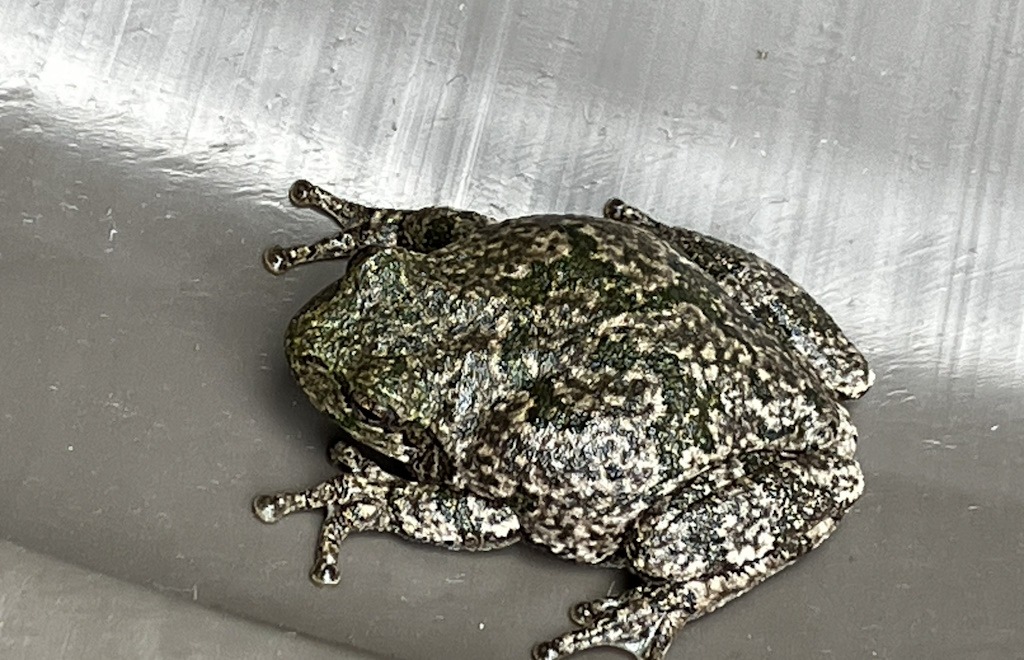
On another hot day, in the raspberry patch, I observed a small bunny reach up to one of the ripe, red berries and start nibbling. Could this be a way to increase a rabbit’s fluid intake on a hot day? I felt a sense of connection to this little being trying to stay hydrated.
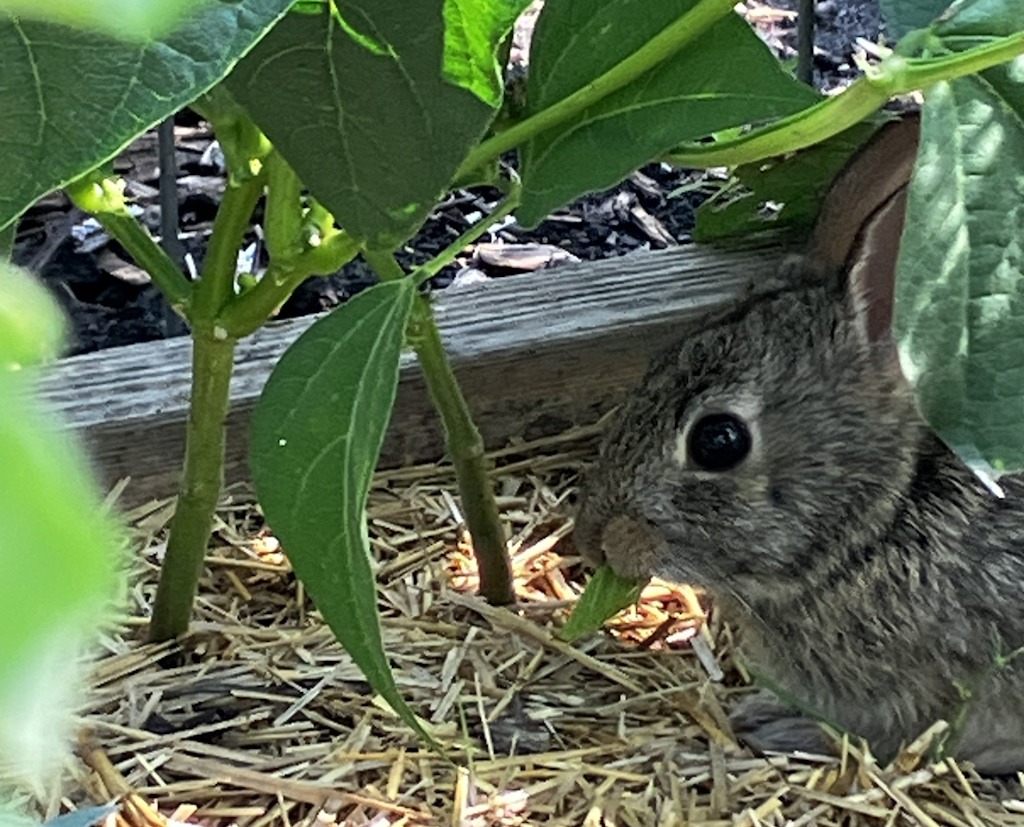
Bees continued their work of collecting pollen, butterflies landed on flowers for their meal of nectar and birds visited our fruit trees for berries.

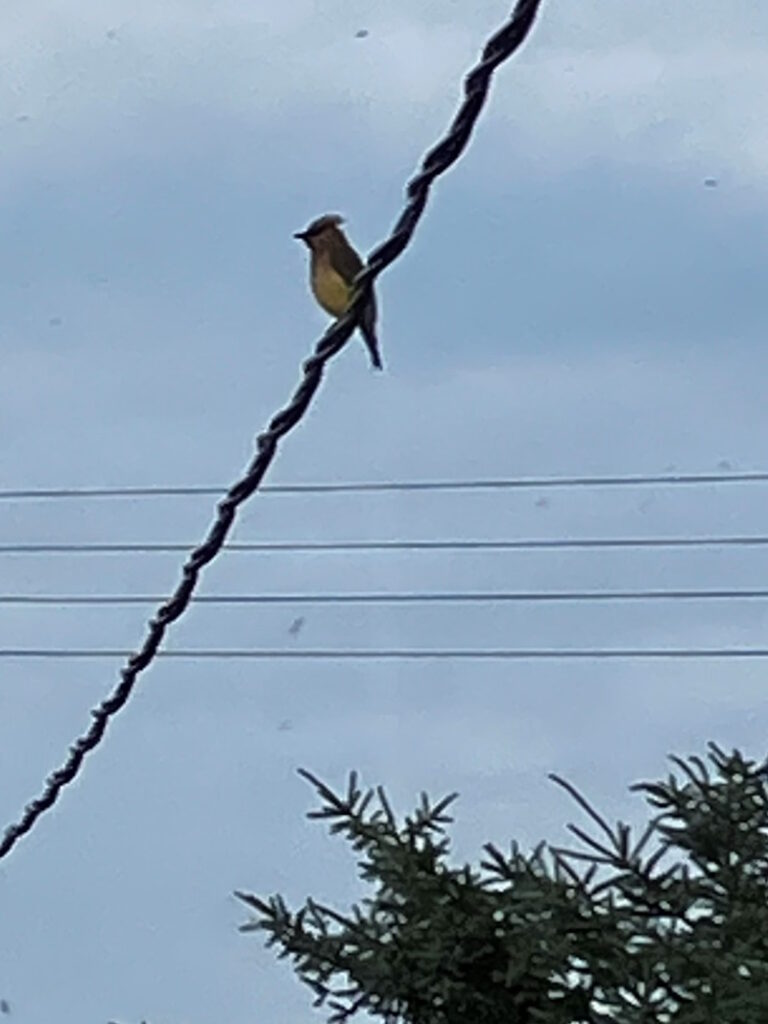
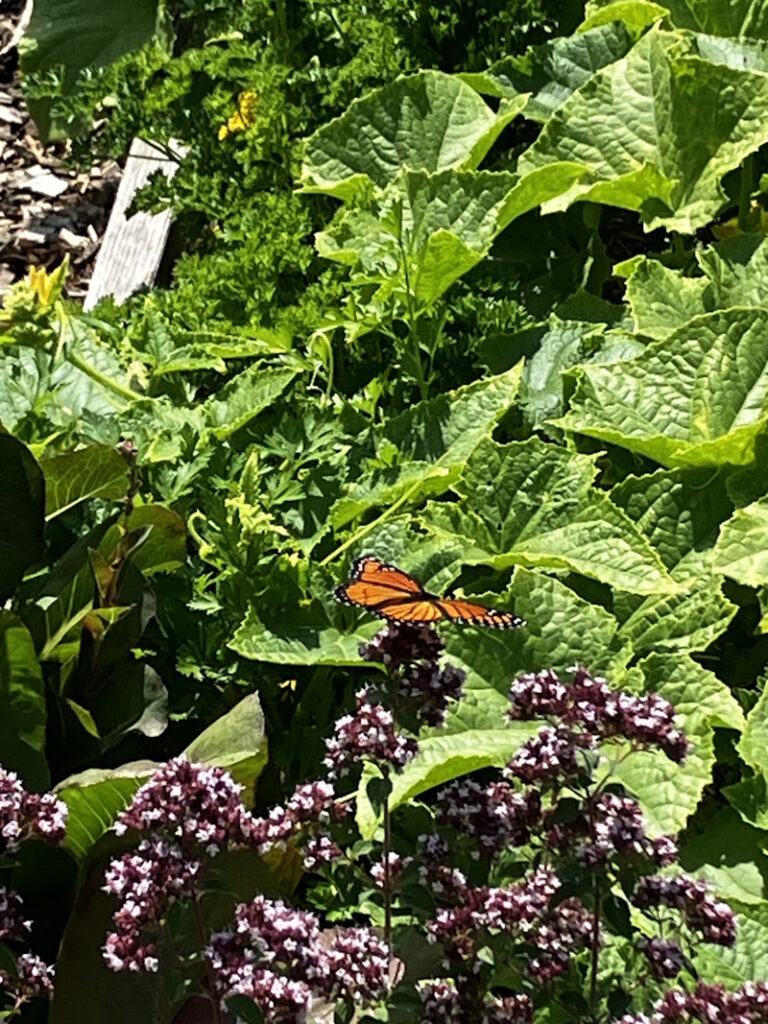
While collecting material for its nest, the leaf-cutter bee left small semi-circular cutouts along the perimeter of rose leaves as a sign that it, too, was trying to continue its life in this garden.
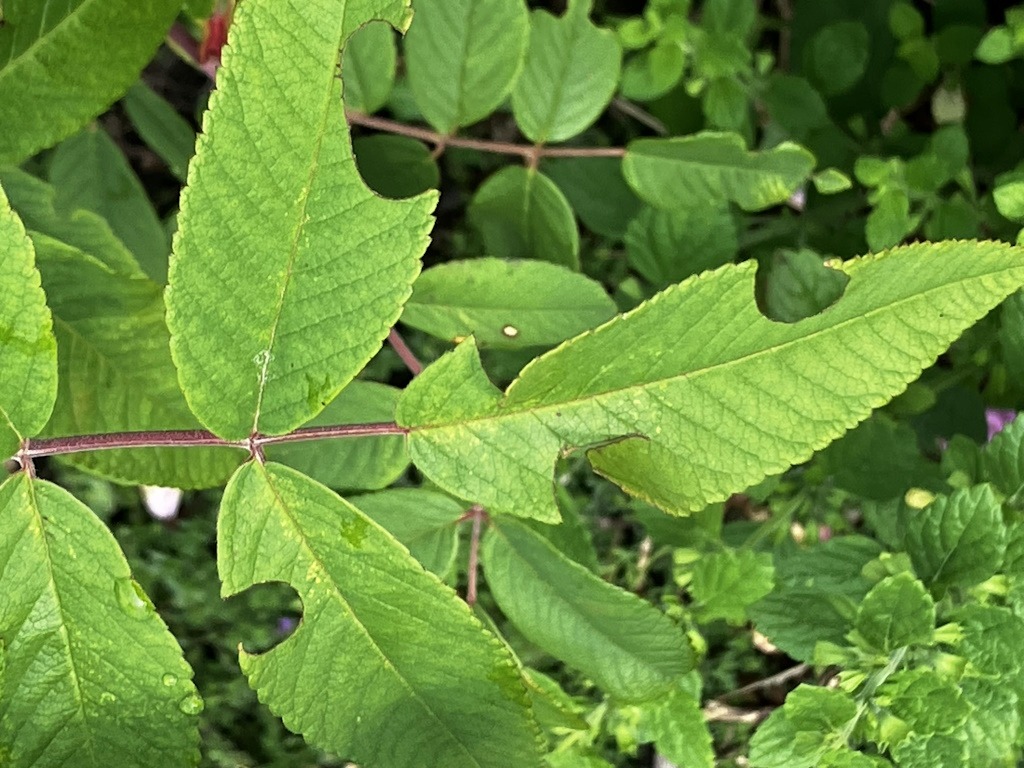
Small mushrooms growing on the surface of the woodchip mulch hinted at the vast unseen underground network of fungal strands doing the work of cycling and transporting nutrients, among many other functions.
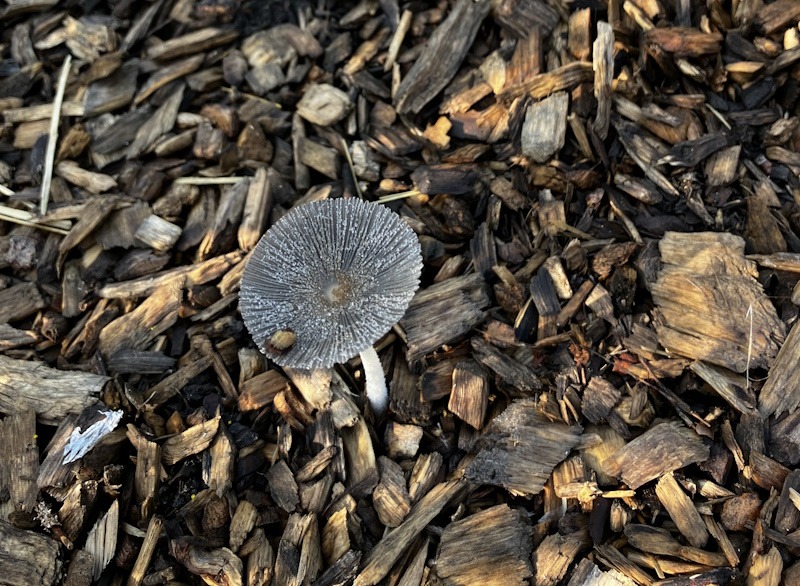
All of these observations reminded me that I was not alone in my efforts to continue daily life in this place at this time. Marcelo Gleiser, theoretical physicist, has said
“we have a moral imperative for our species at this moment in our history, which is to develop and really deepen this kinship with all forms of life, remembering that we didn’t just come from apes. We actually came from a bacterium that lived about three billion years ago, LUCA, or the last universal common ancestor. There is a profound unity to all life-forms because we have flourished from the same source.”²
Yes, we truly are “all in this together.”
Postscript: Almost a month after I encountered the frog seeking shelter at the water barrel, I was watering the garden again and discovered not one, but four, slightly smaller frogs there! My utter surprise was accompanied by pure joy at this sign of hope.
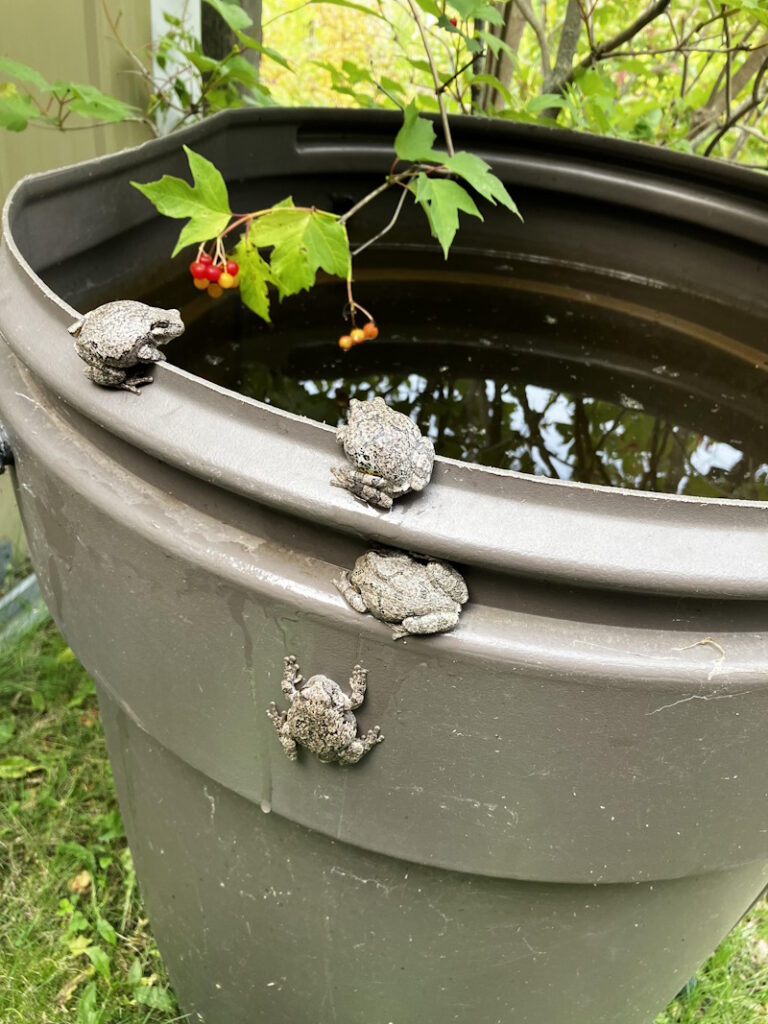
1 Encyclical Letter Laudato Si’ of the Holy Father Francis on Care For Our Common Home, page 30, paragraph 42.
2 “Living in Mystery: an Interview with Marcelo Gleiser” by Steve Paulson in Planet, Vol. 01 edited by Gavin Van Horn, Robin Wall Kimmerer and John Hausdoerffer. Center for Humans and Nature Press, Libertyville, Illinois, 2021, p. 80.
Wendy spent a good part of her adult life moving with her husband, never staying long enough to see an apple tree mature and bear fruit. When they retired, developing a food garden and planting hardy ornamentals became a passion. Weaving her previous studies in nutrition with her current interest in gardening has become a stimulating and life-giving activity.
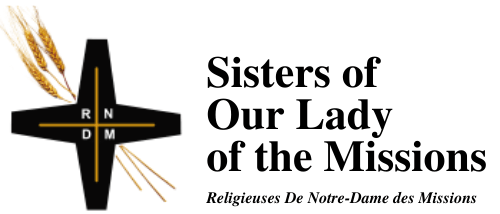
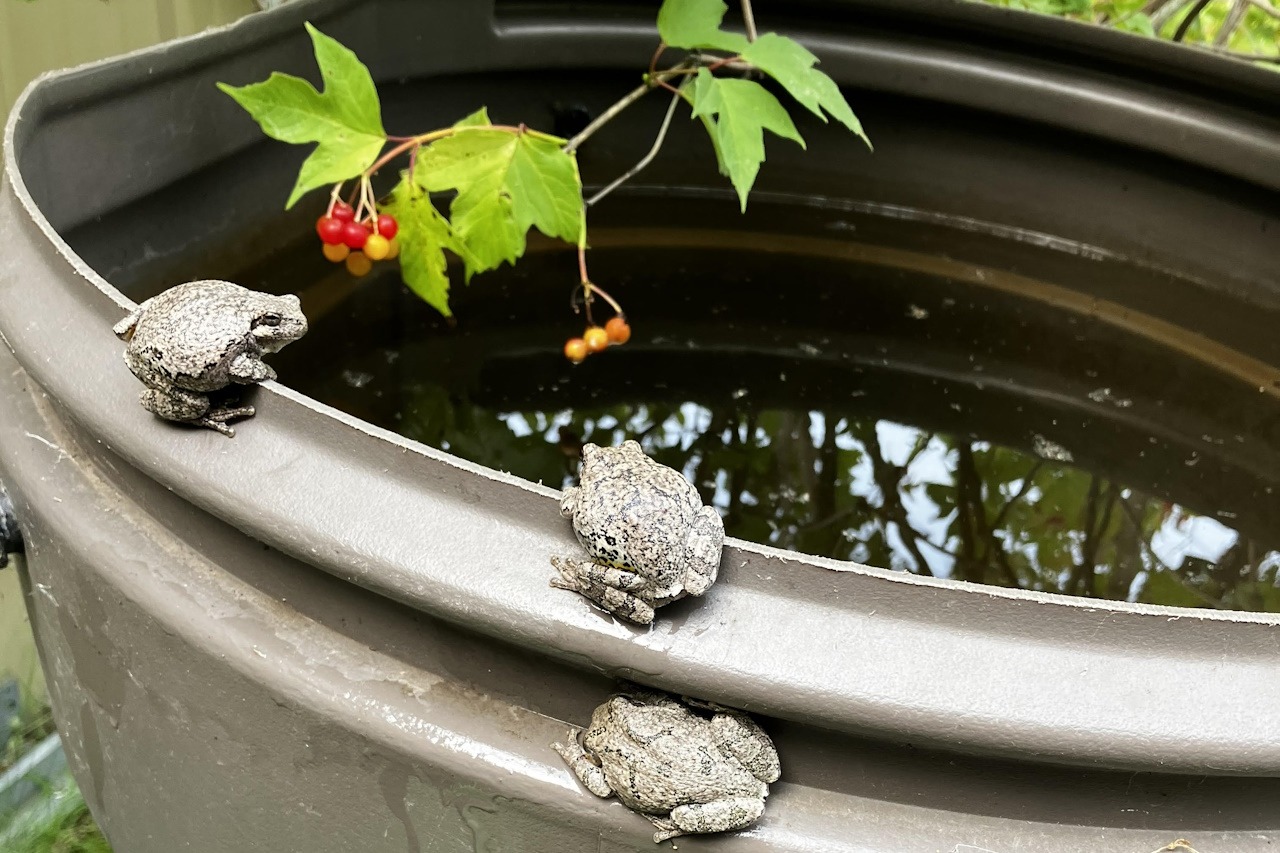

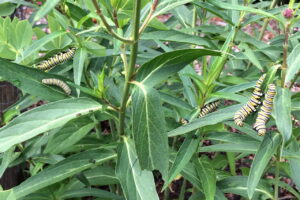
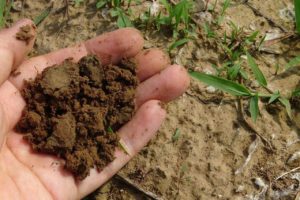
I love this reflection, Wendy! How to share space with all creatures is a challenge especially when “nature” can be inconvenient. Thanks for the challenge to open my eyes to a wider embrace!
I, too love to garden and observe those who share my garden space, Wendy (wish we had frogs, my husband is always looking for them). Your sharing is delightful! I recommend a book I stumbled upon, called The Book of Nature by Barbara Mahany. The subtitle is “The Astonishing Beauty of God’s First Sacred Text”. I suspect you might enjoy it! Thanks again for this reflection!
Thanks Wendy for sharing your “contemplative reading” of life in its many forms in your garden. Thanks also to Katherine Cameron for sharing her book recommendation. Finally, thanks for the beautiful photos which are “contemplative aids” in themselves!